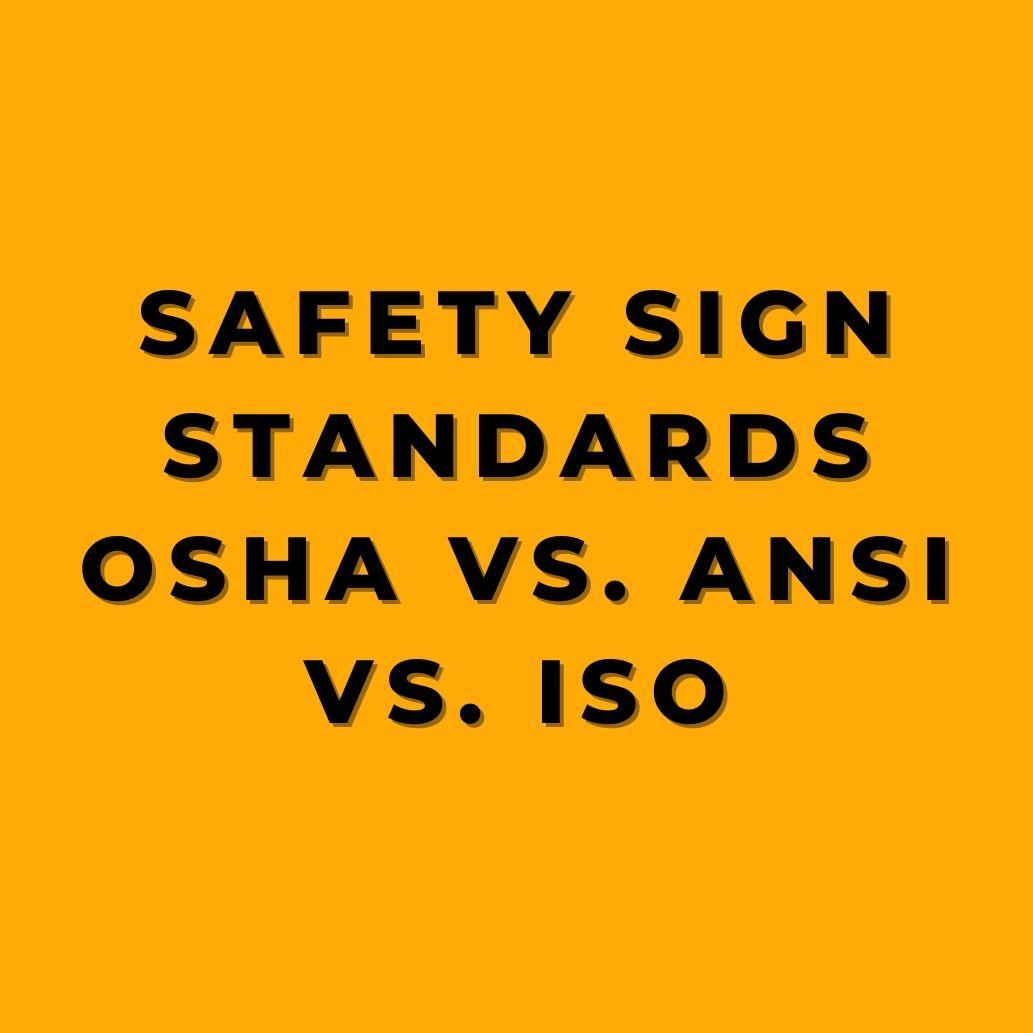As a workplace safety expert, I understand the importance of having clear and effective safety signs in the workplace. One aspect of this is understanding the different safety sign standards, such as OSHA, ANSI, and ISO. While all of these standards have the same goal of providing clear and effective safety signage, they have some key differences that employers and employees should be aware of.
The key difference between OSHA, ANSI, and ISO standards is that OSHA is legally binding, while ANSI and ISO are voluntary standards. OSHA regulations require employers to provide safety signs and labels as necessary to warn employees of potential hazards and that safety signs be durable, legible, and understandable by all employees. This is important because it ensures that safety signs are in compliance with government regulations and that they are clear and effective in warning employees of potential hazards. By following OSHA regulations, employers can help to prevent accidents and injuries in the workplace.
ANSI, on the other hand, is a private organization that develops and publishes standards for a wide range of products and services, including safety signs. ANSI Z535.1 is the standard for safety signs, which provides guidelines for design, layout, and color. This standard is voluntary, but many employers choose to follow it as a best practice. This is important because it helps to ensure that safety signs are clear, consistent and easily recognizable. By following ANSI standards, employers can help to improve safety in the workplace and make it easier for employees to quickly identify and respond to potential hazards.
ISO, or the International Organization for Standardization, is an international organization that develops and publishes standards for a wide range of products and services. ISO 7010 is the standard for safety signs, which provides guidelines for design, layout, and color. It is similar to the ANSI standard and is also voluntary. This is important because it helps to ensure that safety signs are clear, consistent and easily recognizable. By following ISO standards, employers can help to improve safety in the workplace and make it easier for employees to quickly identify and respond to potential hazards.
Another difference is that OSHA focuses on workplace safety specifically, while ANSI and ISO standards cover a wide range of products and services. OSHA safety signs are more comprehensive and specific to workplace hazards, while ANSI and ISO safety signs are more general, focusing on overall design and layout. This is important because it ensures that OSHA safety signs are tailored to the specific hazards of the workplace, while ANSI and ISO safety signs are more general, which can be used across different industries.
By understanding the different safety sign standards, such as OSHA, ANSI, and ISO, employers can ensure that their safety signs are clear, consistent and effective in warning employees of potential hazards. Employers should also be aware of the specific requirements and guidelines of each standard and how they differ from each other. By following these standards and guidelines, employers can help to improve safety in the workplace and make it easier for employees to quickly identify and respond to potential hazards. Additionally, by using safety signs that comply with OSHA, ANSI, and ISO standards, employers can help to ensure that their workplace is in compliance with government regulations and industry best practices. Overall, safety sign standards play an important role in promoting safety in the workplace and employers should make sure to stay up-to-date with these standards to ensure they are providing the best safety measures for their employees.










